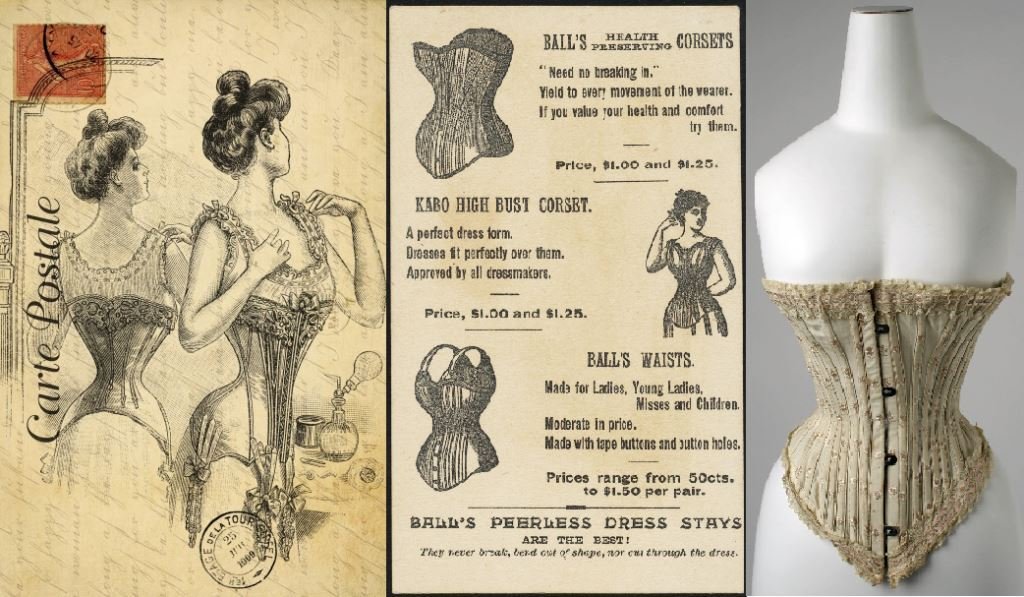Recent media coverage of “red carpet” events and “fashions in the field” shows how much attention is still paid to what women wear. But while fashion is often portrayed as a product of women’s vanity or self-indulgence, the forces driving female fashion have long involved male influence, whether through design, media, or social expectations.
This dynamic was already evident in the 1880s, when newspapers commented critically on women’s dress. The following article from The Daylesford Advocate of 11 February 1882 reveals how such commentary often blamed women for fashion excesses that were, in part, shaped by the very society judging them.
From The Daylesford Advocate of Saturday 11 February 1882:
Deaths from tight lacing have been of frequent occurrence for many years past, and a few more or less, says The Lancet, can make no difference to the fashionable world. Dr Danford Thomas, the coroner for Central Middlesex, says he is personally cognizant of four or five such painful sacrifices to an ideal conception of the human figure, which is totally at variance with fact and opposed to the laws of nature.
In the most recent case of this class recorded, an aged woman who died from syncope [Editor’s Note: The medical term for fainting, a temporary loss of consciousness caused by a sudden loss of flow of blood to the brain] was found to have so compressed her body by tight lacing that the stomach was, as it were, divided into two portions, one being thrust upwards so as to hamper the movements of the heart, whilst the other was forced downwards. It may be alleged that the death of a woman at 70 years of age cannot be held as evidence against the urgent evils of the practice.
We lay great stress on the case because it is clearly not available as evidence of urgency. It is rather significant as a proof of the injury which the human body will endure without the extinction of life. It cannot be pretended that a stomach ought to be compressed as this woman’s had been. She lived on in spite of the maltreatment to which her figure was subjected in the interests of fashion.
It cannot therefore be argued that, inasmuch as the deaths from tight lacing are not so numerous as they might be, no serious harm is done. It is evident that extra violence may be used, and grave mischief may be done by tight lacing even when the victims of this stupid and baneful practice are not killed outright.
Many of the maladies to which women are subjected are the direct consequences of their habits, and the vagaries of dress and the artifices of the toilet are among the most pernicious. Although it is vain to argue with women, the facts must be stated, however little may be their influence on the female mind by vanity distraught.

From the Daylesford and District Historical Society. https://daylesfordmuseum.net/





